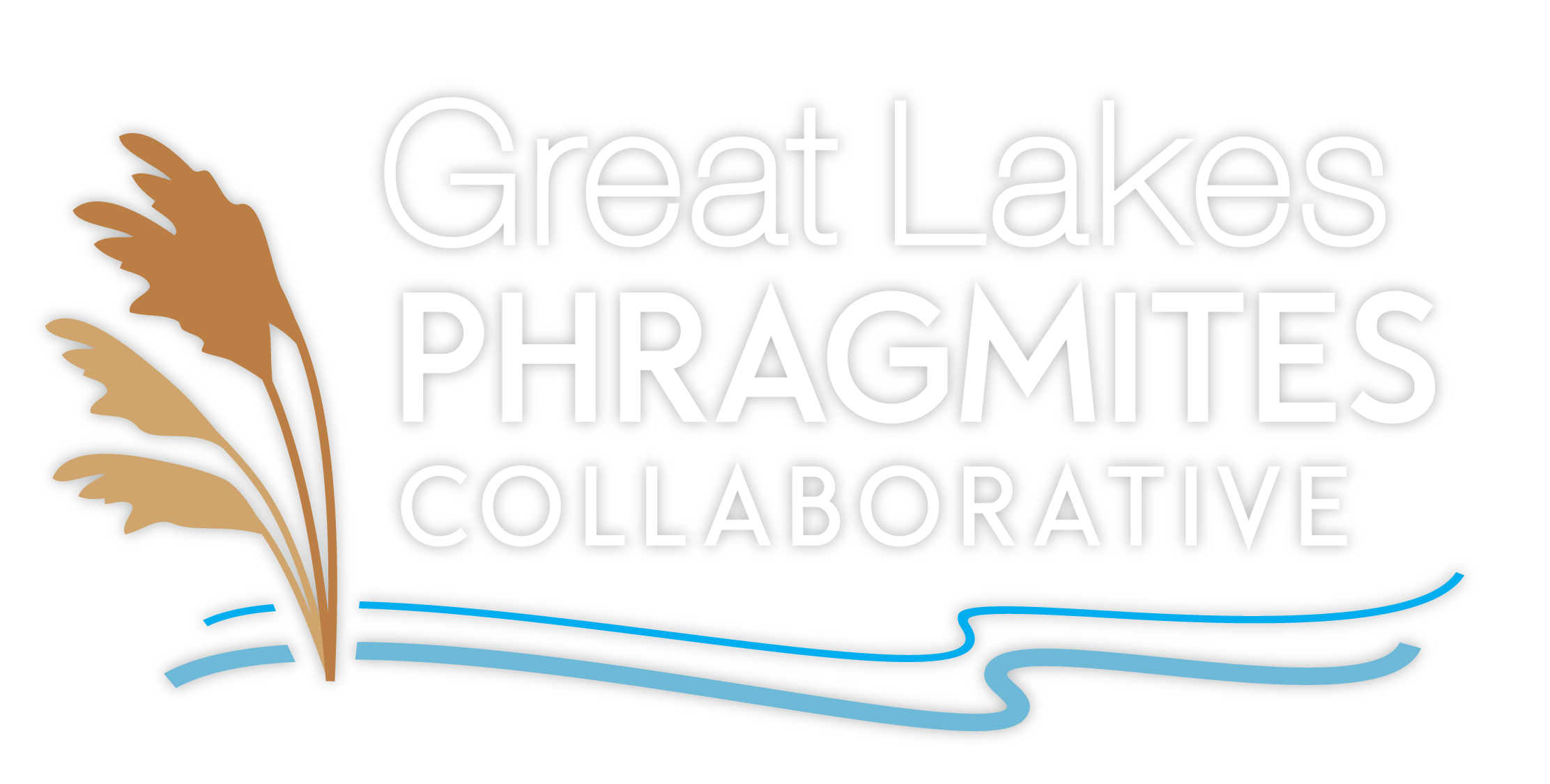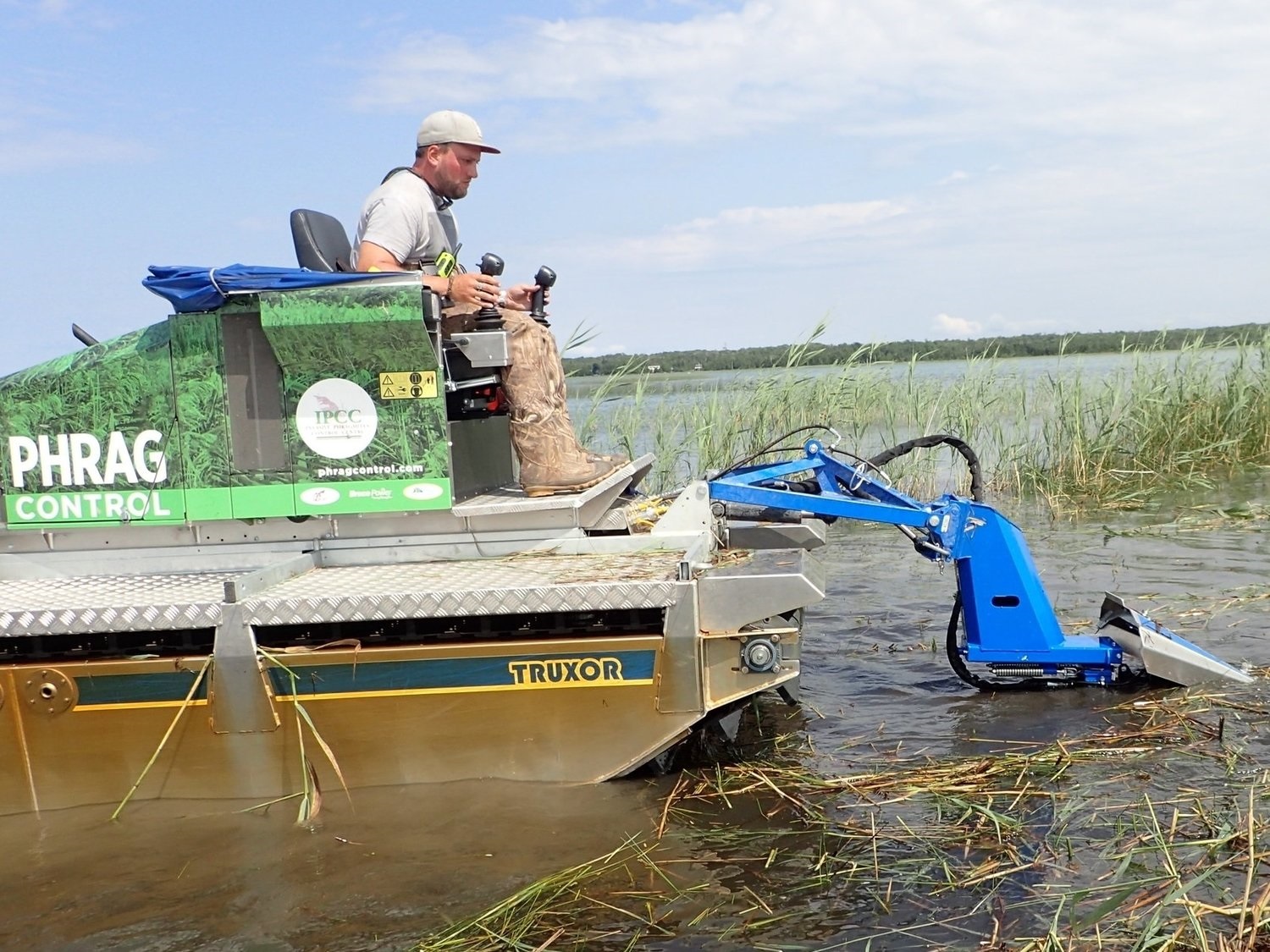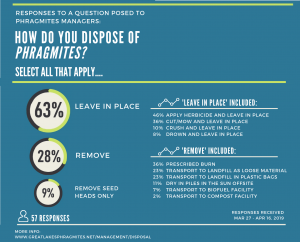Disposal
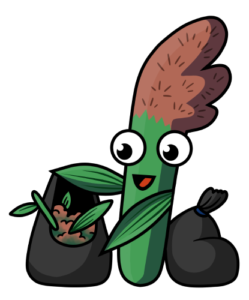 What are the best methods for disposing of Phragmites after treatment? There are several options available that can help prevent Phragmites from returning after treatment. For more information, see our blog post about disposal. Is there a method you use that isn’t listed here? Please let us know and we will add it to the site!
What are the best methods for disposing of Phragmites after treatment? There are several options available that can help prevent Phragmites from returning after treatment. For more information, see our blog post about disposal. Is there a method you use that isn’t listed here? Please let us know and we will add it to the site!
Phragmites Removal
The first step in Phragmites disposal involves removing it from the growing location.
Stem Removal From Water
- Collect cut stems into a barge or boat
- Move the stems to land
Stem Removal From Land
- Tractors and backhoes can collect the Phragmites into piles
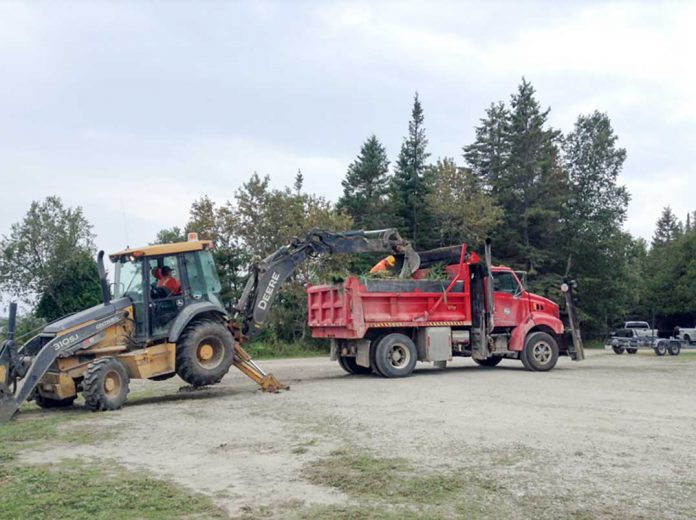
Burying Phragmites
-
Effective burial requires about 70 cm (or 27 in) of soil over the Phragmites
-
Make sure the sediment is dry to prevent Phragmites re-sprouting
-
Nearby municipal dumps can also bury mounds under 70 cm without additional cost
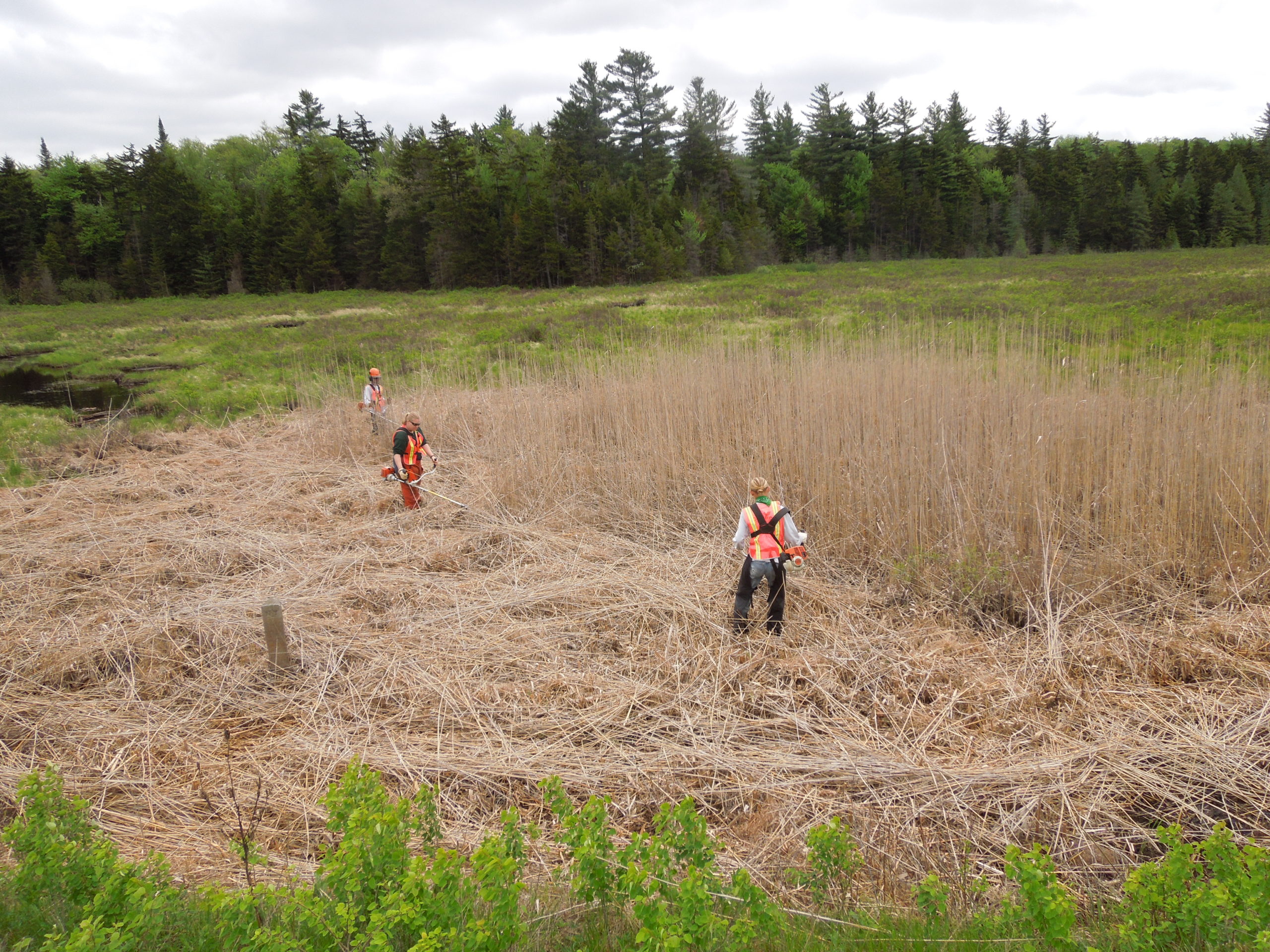
Piling Phragmites After Cutting
- Simply move piles to shore. When left high and dry, Phragmites won’t re-sprout. Bare rock or nearby shoreline are best.
- If mounds are large, use a barge to collect cut Phragmites and a backhoe to move them to a pile
- Any regrowth can be managed by hand pulling or backpack spraying
- Piles also speed up decomposition; crushing stems with equipment will also help speed up decomposition
- If you can’t move the cut material out of a wetland, moving Phragmites into a pile can create areas of open water
- If a field is nearby, you can also leave these mounds and burn them during the prescribed fire’s season

Burning
- Burning dead Phragmites is an effective method to clear out a large amount of biomass
- Cutting down stems isn’t necessary for this method
Results: 2019 disposal questionnaire
How are managers in the Great Lakes region disposing of Phragmites after treatment? In spring 2019 we sent a question to the Phragmitesnet listserv asking for this information. Of the 57 responses received, 63% reported that they leave Phragmites in place, while 28% removed it from the site, and 9% removed seed heads only.
